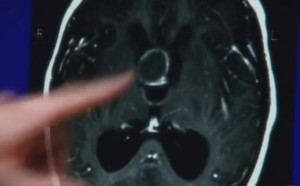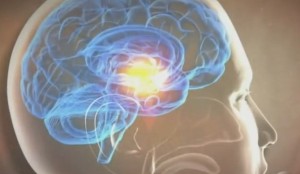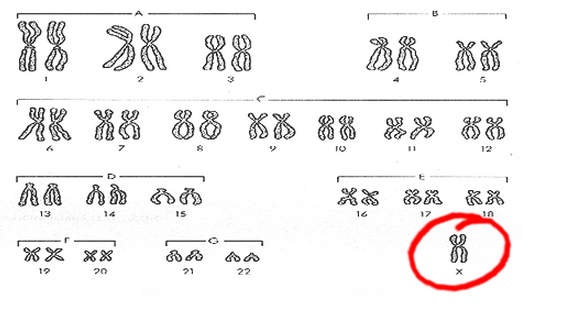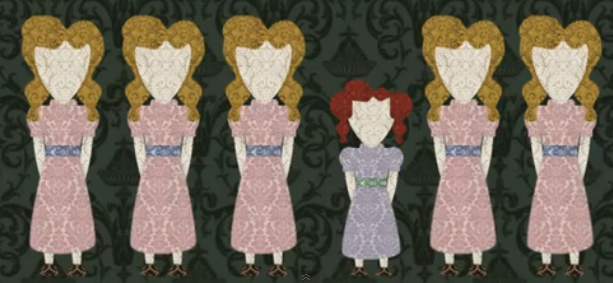Prader-Willi syndrome is a rare, abnormal, congenital condition identified by the presence of mental, physical, and behavioral abnormalities, the most distinctive of which is continuous and insatiable hunger that commences after age one year and persists for the rest of the patient’s life.
Voracious and frequent eating to overcome the effects of extreme hunger pangs typically results in obesity, which then causes several obesity-linked health complications. Specialists from varied fields are required to manage and control the signs and symptoms of Prader-Willi syndrome as well as to prevent the onset of complications.
Symptoms
The signs and symptoms of Prader-Willi syndrome are categorized into two stages, one that occurs during the first year after birth and the second that occurs between ages 1 and 4 years.
Stage 1: It is marked by:
- Unusual and easily noticeable facial features such as a mouth which droops downwards, an elongated head that tapers towards the temples, eyes shaped like almonds, and slim upper lip.
- The condition of poor muscle tone known as hypotonia. When held in one’s hands, Prader-Willi syndrome babies may feel flaccid like bean babies or rag dolls. Floppy and extended knees and elbows may pose problems in comfortable seating and resting.
- Poor muscle tone can also cause inadequate sucking reflex, thereby causing feeding issues, inadequate gain of weight, and eventual failure to grow normally and thrive.
- Babies with Prader-Willi syndrome may show abnormal or poor response to stimulation, have difficulties in waking up after sleep, feel unusually tired and lethargic, and exhibit a weak cry.
- Lack of coordination between the eyes with regards to their movement. This can cause the eyes to meander to the sides or be cross. The ocular disorder is known as strabismus.
Stage 2: It is marked by:
- Infants with Prader-Willi syndrome suffer from poor development and growth. The feet and hands may not be as long as normal. All these factors including the presence of lowered muscle mass results in them being shorter as adults when compared with other members of their family.
- Continuous food cravings can result in rapid and considerable weight gain. The hunger pangs persist even after the intake of large meals, which cause Prader-Willi syndrome patients to eat more and at regular intervals. Eating frozen food or garbage, hoarding of food, and other abnormal food seeking behaviors may also be visible.
- Delays in motor development and achievement of developmental milestones. Sitting upright may occur in 12 months or more, while walking may occur after 2 years or more.
- The testes or ovaries may produce nil or miniscule amounts of sex hormones causing hypogonadism, immature sex organs, and stunted growth after the onset of puberty. Male Prader-Willi syndrome patients will feature voices that do not deepen completely and minimal or absent facial hair, while female patients may never menstruate or have periods only after they reach their thirties. Infertility among both sexes is common.
- There may be minor or medium levels of cognitive problems. Even those patients with no observable cognitive deficit may display some problems in learning.
- Delays in speech development. Babies may start speaking only after they become two years old. Diction impairment and other speech problems may persist.
- Several children affected by Prader-Willi syndrome may also experience abnormal curving of the spine, i.e., scoliosis.
- Sleep disorders, including sleep apnea, abnormal patterns of sleep, and disturbances in sleep cycles, etc., may be evident. Obesity can aggravate these problems.
- Varied mental problems, behavioral issues, and psychological abnormalities such as OCD marked by repetitive behaviors and actions and recurring thoughts; major aggression and temper tantrums which become more prevalent when food is not given; and rectal gouging, picking at skin, etc., ,may be observed.
- Some individuals with Prader-Willi syndrome may exhibit symptoms such increased tolerance capacity for pain, nearsightedness, and pale skin.
Causes
- Prader-Willi syndrome is a hereditary condition caused due to genetic defects or errors. Doctors are not aware of the exact gene that has the errors, but research indicates that the defective gene may be present in a particular section of chromosome 15.
- All genes, excluding the gender genes, are passed on from the parents in pairs wherein one copy comes from the mother and the other from the father. Each copy of most genes is active, while some genes may continue functioning even when just one copy is expressed or active.
- Prader-Willi syndrome is caused when the copy of a gene passed from the father does not get expressed; its expression is essential to proper functioning. This genetic anomaly may arise due to:
- Paternal copy of chromosome 15 is absent.
- Presence of defects, errors, or mutations in paternal copy of chromosome 15.
- Inheritance of 2 maternal copies of chromosome 15, while none from the father.
- The genetic anomaly that causes Prader-Willi syndrome also affects the functioning of the hypothalamus. This part of the brain is responsible for regulation of hunger, thirst, and other important body functions as well as controlling the production of hormones responsible for growth and development. Thus, dysfunction of hypothalamus is what eventually causes stunted growth, insatiable hunger, sexual problems, and other deficits associated with Prader-Willi syndrome.
Treatment
There is no cure for correcting the genetic mutation associated with Prader-Willi syndrome. Treatment is aimed at managing the symptoms and preventing complications.
- Feeding problems and subsequent weight gain issues can be overcome with a high-calorie diet given to affected babies. Older children then need to be given a calorie-controlled diet to avoid obesity.
- Growth hormone therapy can help improve metabolic activities, lower body fat, aid growth, and enhance muscle mass and tone.
- Mental health problems can be corrected with medications and psychological therapies. Speech issues can be corrected with speech therapy, cognitive issues can be corrected with behavioral cognitive therapy, while occupational therapy can help cope with the daily routine and work life.
- Hormone replacement therapy can help increase the levels of sex hormones.
Prader-Willi Syndrome life expectancy
Prader-Willi syndrome does not come with any standard or specific life expectancy. Patients who can efficiently control their diet and hunger pangs can completely avoid the onset of obesity and related complications such as lung failure or cardiac diseases. This will not only prolong the life of such patients but will also result in a better overall quality of life. Specialized care and supervision may be needed for some patients across their lifespan.
Prader-Willi Syndrome pictures


The hypothalamus location





